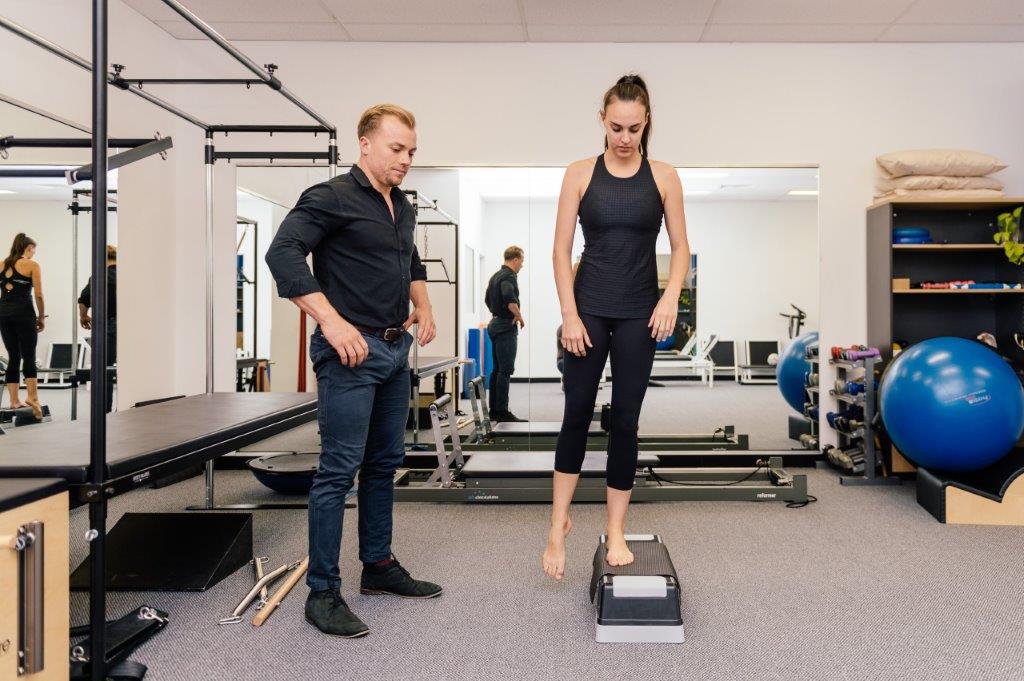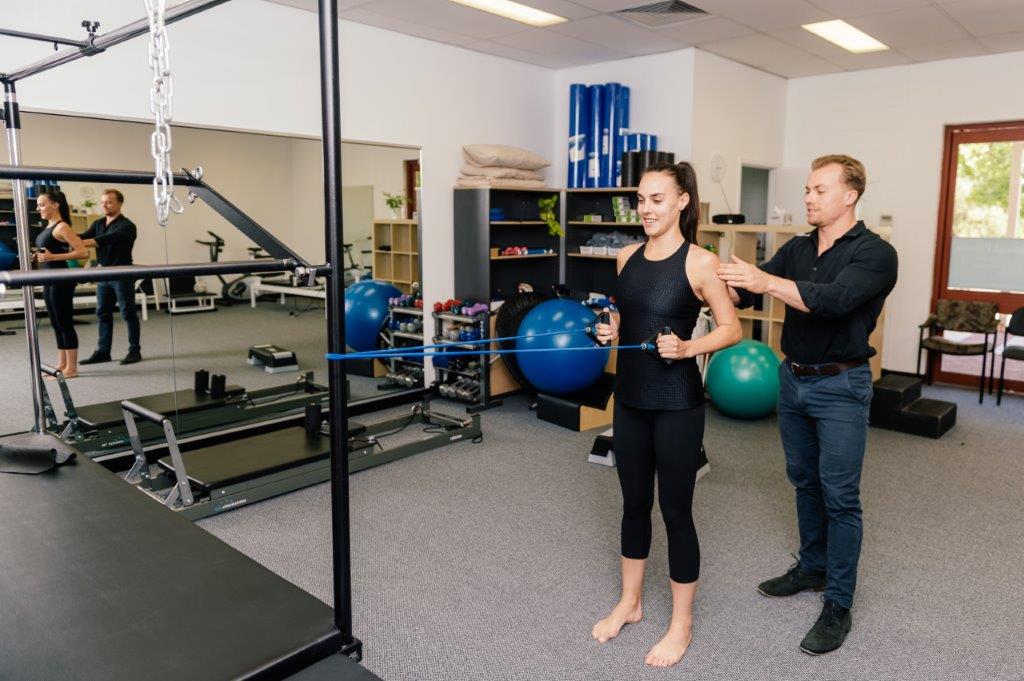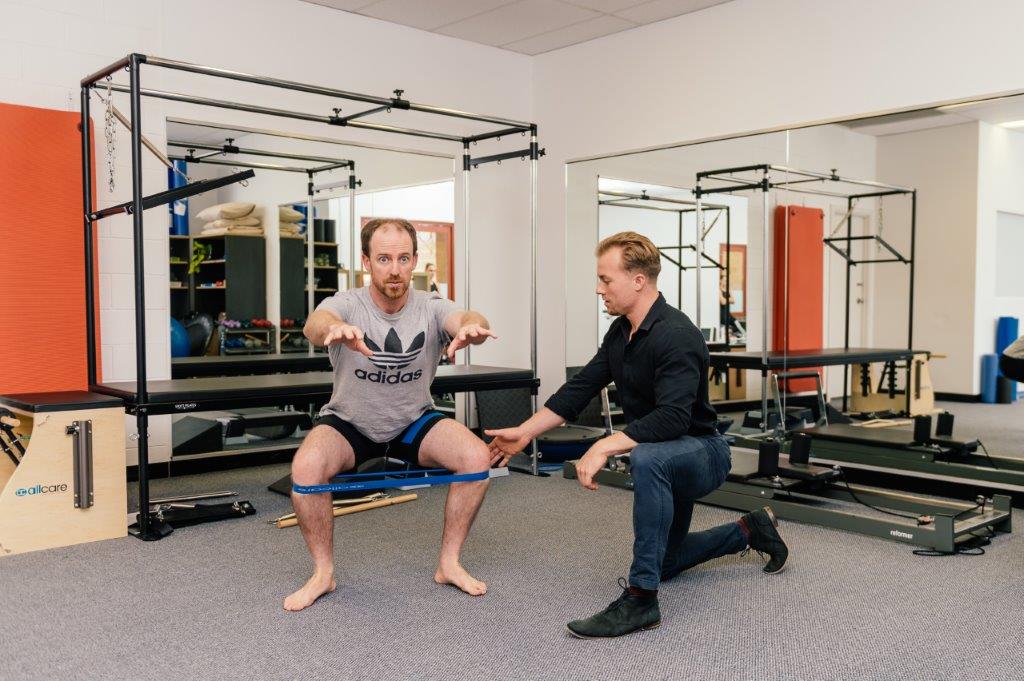Throughout the body there are strength muscles and stabilising muscles. The strength muscles produce the movement of the body while the stabilising muscles support and protect the body. The stabilising muscles are essential for the protection of the joints and other tissues by providing “shock-absorption” so that movement does not jerk or jolt the body. The stabilising muscles also maintain a static contraction to provide continuous support during prolonged postures (eg. sitting at a desk or standing for a long time) and to absorb minor jarring (eg driving in a car).
stabilising muscles
Generally, the strength muscles are large powerful muscles that can produce tremendous power. The strength muscles are usually developed by performing strong exercises (eg sit-ups or gym exercises). Some of the most commonly known strength muscles are the biceps muscle of the arm and the quadriceps muscle of the thigh. The stabilising muscles however are much smaller deeper muscles that do not generate great force. The stabilising muscles can only be developed by very specific and often quite gentle exercises.
Without good stabilising muscle function, the physical stress from even gentle daily activities can cause damage. Ironically, the stronger the strength muscles, the more stress that the body must absorb and the more damage that can be caused. The stabilising muscles must therefore be developed in proportion with the strength muscles.
Research shows that the stabilising muscles almost always weaken following an injury and will not necessarily automatically or spontaneously re-strengthen. Your physiotherapist can assess the stabilising muscles and teach the specific exercises to re-develop them to ensure complete recovery from injury and reduce the chance of recurrence.
The Lumbar Spine
Correct function of the stabilising muscles of the lumbar spine is essential to maintain good spinal health. Following an injury to the lumbar spine or an episode of low back pain, the stabilising muscles often weaken and become unable to support and protect the spine. This lack of support and protection causes ongoing pain, slower recovery and increases the chance of re-injury.
lumbar spine
Correct function of the stabilising muscles of the lumbar spine is essential to maintain good spinal health. Following an injury to the lumbar spine or an episode of low back pain, the stabilising muscles often weaken and become unable to support and protect the spine. This lack of support and protection causes ongoing pain, slower recovery and increases the chance of re-injury.
Recent physiotherapy research has shown that the stabilising muscles for the lower back (“Multifidus” and “Transversus Abdominis”) do not spontaneously re-develop following an injury and require very specific exercises to be re-strengthened. Sit-ups, back arches and similar exercises do not strengthen the stabilising muscles and in fact often cause more harm by developing the “wrong” muscles or stressing the injured tissues.
Stabilising muscle function should re-developed soon after the injury to prevent ongoing pain. Your physiotherapist will assess the stabilising muscles and will implement specific exercises as part of the treatment usually required for a full recovery from low back pain.
Ultrasound Imaging
The stabilising muscles of the lumbar spine are very deep and are difficult to assess accurately. It is also difficult to learn how to exercise the muscles correctly. Real-time ultrasound imaging produces an image of the stabilising muscles on a screen and allows the physiotherapist and the patient to watch the muscles work while they are being exercised. This allows accurate and measurable assessment of the muscles and helps the patients learn how to exercise the stabilising muscles correctly.
This Clinic offers real-time ultrasound imaging of the deep stabilising muscles of the lower back to assist with the assessment and rehabilitation of these muscles following an episode of low back pain. The Clinic sends a report outlining the real-time ultrasound imaging assessment findings to the doctor and the treating physiotherapist so the exercises can be progressed appropriately and precisely to suit the condition.
The Neck
The stabilising muscles of the neck “hold” the neck in the correct position and are therefore essential for good posture and correct movement. The stabilising muscles of the neck are also protect the spine from “micro-trauma” as a result of jarring or jerky movement.
Ongoing physiotherapy research has demonstrated that the deep stabilising muscles of the neck may weaken over several months or even years due to poor posture (eg sitting incorrectly at a desk for long periods) or the muscles may weaken over a few days as a result of an injury (eg. a car accident or carrying a heavy school bag). Whether neck pain occurs gradually or as a result of an injury, re-developing the stabilising muscles of the neck is usually essential for a full recovery.
If you have neck pain or neck-related headaches, the stabilising muscles will be assessed by your physiotherapist in combination with a full examination of your neck and posture. Like the exercises for the stabilising muscles of the lower back, the exercises for the stabilising muscles of the neck are very gentle. Your physiotherapist can teach you how to do these exercises properly.
If you have a history of neck problems you should also consult your physiotherapist before commencing a new exercise programme to be certain that the stabilising muscles of your neck are strong enough to support your head before you start lifting weights, swimming or jogging. The postural muscles of your back may also need to be strengthened to maintain good posture while you sit, stand and walk.





